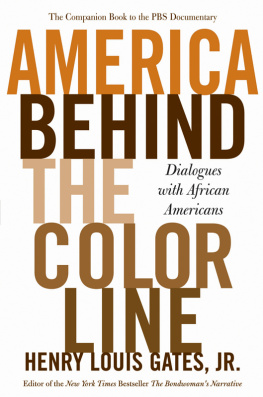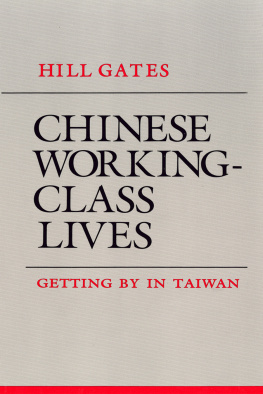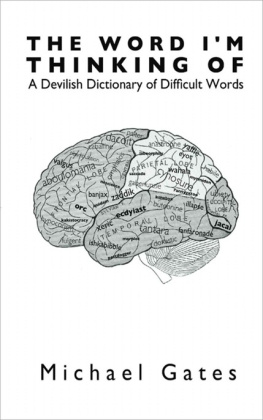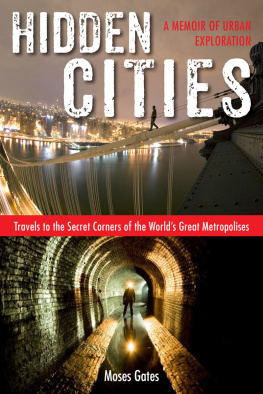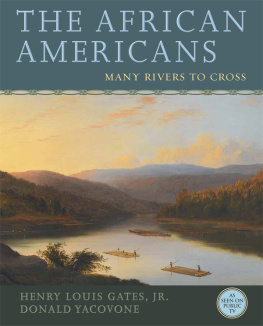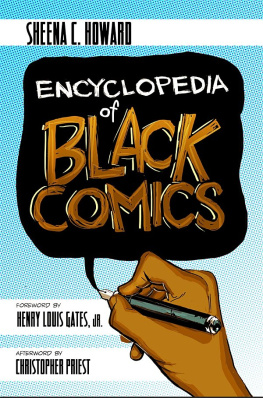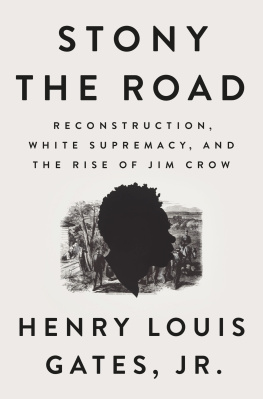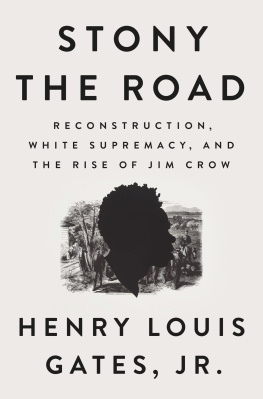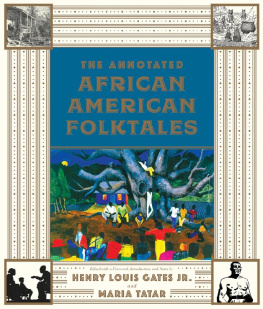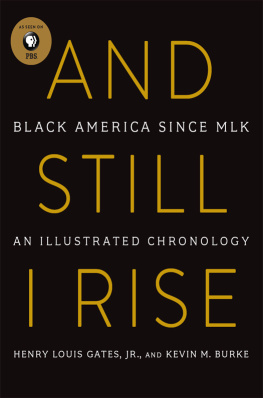
The Signifying Monkey: A Theory of African-American
Literary Criticism
Thirteen Ways of Looking at a Black Man
The African-American Century: How Black Americans
Have Shaped Our Country (with Cornel West)
Colored People: A Memoir
Africana: The Encyclopedia of the African and African American
Experience (with Kwame Anthony Appiah)
EDITED BY HENRY LOUIS GATES, JR.
Our Nig; or, Sketches from the Life of a Free Black
by Harriet Wilson
The Bondwomans Narrative
by Hannah Crafts
Copyright 2004 by Henry Louis Gates, Jr. All rights reserved.
Warner Books
Hachette Book Group
237 Park Avenue, New York, NY 10017
Visit our Web site at www.HachetteBookGroup.com.
The Warner Books name and logo are trademarks of Hachette Book Group, Inc.
First eBook Edition: October 2007
ISBN: 978-0-446-53390-4
This book is the companion volume to the four-part BBC/PBS series America Behind the Color Line, which I wrote and narrated. It presents in essay form many of the interviews that I conducted for the television series, which is an attempt to examine the role of class distinctions within the African-American community at the birth of the twenty-first century. I decided upon this format because of the richness of the interviews, many of which transpired over an hour or two and which, of necessity, could not be included in their entirety within the time restrictions of documentary television. To accomplish this goal, I benefited from the advice and editorial skills of Hollis Robbins and Toni Rosenberg.
I want to thank Hollis Robbins for her generous assistance in thinking through and organizing the extraordinarily difficult work of transforming a four-part audiovisual work into a single, integrated, textual one.
My consulting editor, Toni Rosenberg, with a clarity and commitment truly rare, crafted essays from the interviews I conducted. Ms. Rosenberg brought a depth of vision to the work that equaled my own expectations for what the companion book to the documentary might convey. I owe my deepest thanks to her both for her tremendous skills as an editor and writer and for her unsurpassed dedication to the book.
I would like to thank my editors at Warner Books, Jamie Raab, Colin Fox, and Larry Kirshbaum, for their enthusiastic support of this project. My agents, Tina Bennett, Lynn Nesbit, and Bennett Ashley, offered sage advice at every stage in the development of the television series and this book. Henry Finder kindly read various versions of my manuscript and critiqued them, both closely and wisely, helping me to figure out what I was trying to say. Joanne Kendall, as always, cheerfully and expertly typed several drafts of the manuscript. William Julius Wilson, Pamela Joshi, and Edward Walker provided the demographic data that appears throughout the text.
I would like to thank Jane Root at BBC2; Sandy Heberer, John Wilson, and Mary Jane McKinven at PBS; and Alex Graham and Jonathan Hewes at Wall to Wall Television for supporting this film series from its conception. Our serious and superb crew consisted of the following extremely talented members: Simon Chinn (series producer), Mary Crisp and Daniel Percival (directors), Jonathan Hewes (executive producer), Helena Tait (production manager), Bridget Bakokodie and Stephen Barrett (assistant producers), Zoe Watkins (junior production manager), Annette Williams and Jason Savage (film editors), Bernard Mavunga (camera assistant), Anthony Meering and Adam Prescod (soundmen), Debbie Townsend (archive researcher), Tamsynne West-cott and Ida Ven Bruusgaard (production team), Quinton Smith (online editor), Lyle Harris and Paul Reaney (fixers), Scott Wilkinson (dubbing mixer), Murray Gold (music), and Ray King (colorist). Without their devotion to this project, the film series could not have been completed.
I want to especially thank my friend Graham Smith for his stunningly beautiful and poignant cinematography, as well as for the pleasure of his company during the shooting of these films and the analysis of the days filming over dinner each evening of the shoot. Graham Smith is an artist.
Finally, I would like to thank all of the people who so graciously allowed the film crew and me to interrupt the rhythm of their lives to discuss, in some detail, the strange interplay of race and class within the African-American community.
Henry Louis Gates, Jr.
October 16, 2003
Contents
I enrolled at Yale University in September of 1969, one of ninety-six black men and women to commence our matriculation at that time. We were the first large group of black people to be admitted to Yale as undergraduates in the same class. By contrast, the Class of 1966 had included only six black male graduates. We were the beginnings of what came to be called the affirmative action generation, though we did not use that phrase to describe ourselves. Vanguard, a term being bandied about by the Black Panthers, seemingly omnipresent in those times in New Haven, where one of their leaders, Bobby Seale, was facing trial along with eight other Panthers, was the word that most frequently sneaked its way into our endless, late-night dorm room analyses of our role, our mission, our responsibility to members of the community whom we had left behind. Would they be locked forever outside all that those hallowed neo-Gothic ivy walls symbolized?
Like any fledgling elite, at once heady with possibility yet racked by the guilt of the survivorthat is, presuming we would survive Yales academic rigorswe were desperate to succeed and desperate for role models who would guide us to that success. Because of a particularly fortuitous bit of good timing, Yale (and many other historically white elite universities) diversified its student body precisely when it introduced the new field of Afro-American studies into the curriculum. To be blunt, a cause and effect relation obtained between the coming of the black students and the creation of this new field. So role models, resplendent black intellectual role models, were in full demand if not in full abundance; there were still just a few on the Yale faculty then, but many more were becoming increasingly available in the curriculum of our black history courses. Like many of my classmates, I adopted the great W. E. B. Du Bois, activist and prolific author, as a hero, even if he was a Harvard man! But Frederick Douglass, Paul Robeson, Thurgood Marshall, and even Dr. King were favorites as well. The true activists among us favored Marcus Garvey, Frantz Fanon, even the slave insurrectionist Nat Turner. Harold Cruses The Crisis of the Negro Intellectual was our textbook du jour: in my sophomore year alone, I read it in three different classes. We were bound and determined to avoid the mistakes that our predecessors in our crossover roles had made; above all else, we wanted to be responsible to the people, as we would put it, representing them somehow, determined to remain accountable to them, bringing them along with us as we scaled the historical barriers to racial progress, dragging them, if we had to, inside the cloistered walls of power and financial success that Yale represented. If we were not yet full-fledged intellectuals, we were in the midst of a crisis, a crisis of identity and representative responsibility, since it was we who had been chosen to leave the black community and integrate what C. Wright Mills had called the power elite. And this power elite was determined, to modify the Childrens Defense Fund motto, to leave no black person behind.

